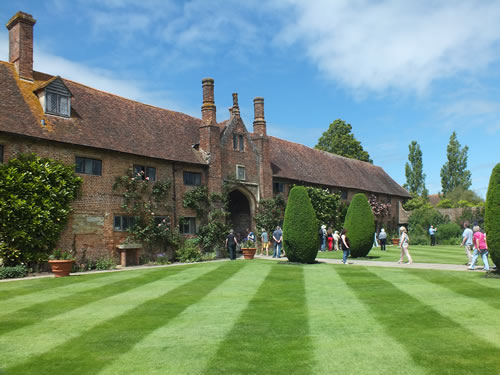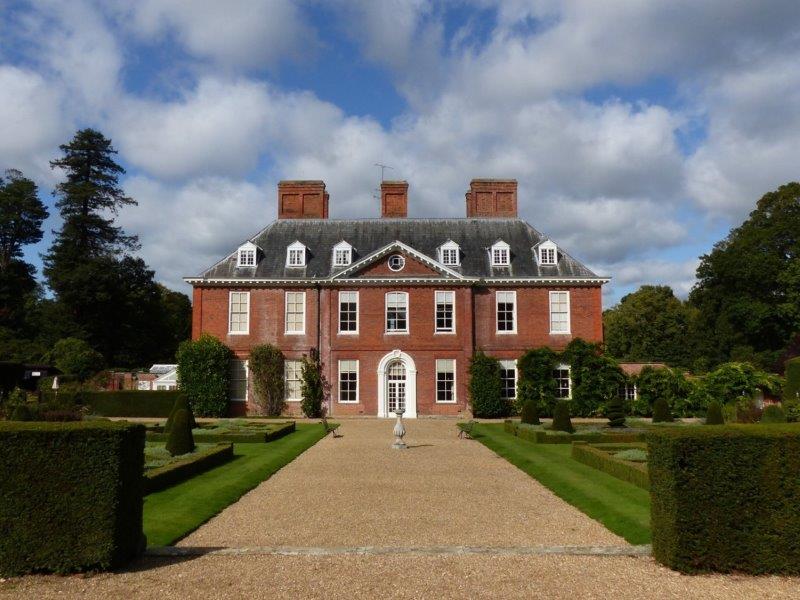





List of Gardens
Click on a garden name to bring it to the top of the page.
- Belmont, Faversham
- Bishopscourt, Rochester
- Chartwell, near Westerham
- Chevening, Sevenoaks
- Chiddingstone Castle, Chiddingstone
- Chilham, Chilham
- Cobham Hall, Cobham
- Court Lodge, Lamberhurst
- Doddington Place, near Sittingbourne
- Eastgate House, Rochester
- Emmetts Garden, Ide Hill
- Godinton House, Ashford
- Goodnestone Park, Wingham
- Great Comp, St Mary's Platt
- Groombridge Place, Tunbridge Wells
- Hever Castle, Edenbridge
- Hole Park, Rolvenden, near Cranbrook
- Knole, Sevenoaks
- Leeds Castle, Maidstone
- Marle Place, Brenchley
- Mere House, Mereworth
- Mote Park, Maidstone
- Mount Ephraim, Faversham
- Officers' Terrace, Chatham
- Penshurst Place, Penshurst
- Port Lympne, near Hythe
- Restoration House, Rochester
- Riverhill Himalayan Garden, Sevenoaks
- Rochester Cathedral Precincts, Rochester
- Scotney Castle, Lamberhurst
- Sissinghurst Castle, near Cranbrook
- Squerryes Court, Westerham
- Vinters Park, Maidstone
 Historic Gardens
Historic Gardens
Sissinghurst Castle, near Cranbrook
 This iconic 9 acre garden lies nestled in the beautiful Weald of Kent countryside surrounded by 450 acres of ancient woodland and farmland. The gardens, the result of a close collaboration between the writer and gardener Vita Sackville-West and her husband, the diplomat Harold Nicolson, were largely created between 1930 and 1939. The formal structure of the garden is attributed to Harold who described the separate enclosures as a succession of intimacies, whilst Vita was responsible for the exuberant planting that still provides wonderful displays of colour throughout the year. Since 1967, Sissinghurst has been managed by the National Trust.
This iconic 9 acre garden lies nestled in the beautiful Weald of Kent countryside surrounded by 450 acres of ancient woodland and farmland. The gardens, the result of a close collaboration between the writer and gardener Vita Sackville-West and her husband, the diplomat Harold Nicolson, were largely created between 1930 and 1939. The formal structure of the garden is attributed to Harold who described the separate enclosures as a succession of intimacies, whilst Vita was responsible for the exuberant planting that still provides wonderful displays of colour throughout the year. Since 1967, Sissinghurst has been managed by the National Trust.
Squerryes Court, Westerham
 The house is a fine ( Grade 1 listed) William and Mary style manor house. The site was occupied by the de Squerie family in the 13thC passing through many hands until purchased by Sir Nicholas Crisp in 1680 who built the present house. His son sold it to the Edward Villiers, Earl of Jersey, who is thought to have developed the extensive formal gardens illustrated in the Badeslade engraving in Harris’History of Kent,1719. In the 18thC and 19thC the grounds were landscaped into rolling vistas with much of the formal gardens lost. The current owners, the Warde family, are continuing a programme of restoration which is returning much of the east gardens to their original form.
The house is a fine ( Grade 1 listed) William and Mary style manor house. The site was occupied by the de Squerie family in the 13thC passing through many hands until purchased by Sir Nicholas Crisp in 1680 who built the present house. His son sold it to the Edward Villiers, Earl of Jersey, who is thought to have developed the extensive formal gardens illustrated in the Badeslade engraving in Harris’History of Kent,1719. In the 18thC and 19thC the grounds were landscaped into rolling vistas with much of the formal gardens lost. The current owners, the Warde family, are continuing a programme of restoration which is returning much of the east gardens to their original form.
Vinters Park, Maidstone
In the late 18th century the industrialist, James Whatman, extensively developed the medieval park in the English Landscape style. He engaged the renowned landscape gardener, Humphry Repton (1752-1818), who completed one of his famous 'red books' about the site. In the mid-19th century, Whatman's grandson, also James, made further improvements to the landscaped garden: many exotic trees and shrubs were planted, and he created a large kitchen garden. A Victorian barrel bridge and old rockery can still be viewed. The site of the early 19th century house (destroyed by fire in the 1950s) still exists, together with surrounding ha-ha walls, the remains of steps and footpaths leading to a 19th century lake, an avenue of lime trees and an ice house. Vinters Park is now managed as a nature reserve and both the barrel bridge and the ice-house are managed as bat hibernation sites.


